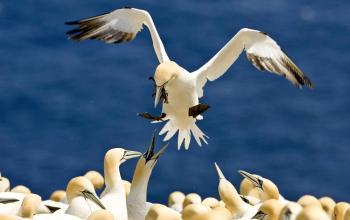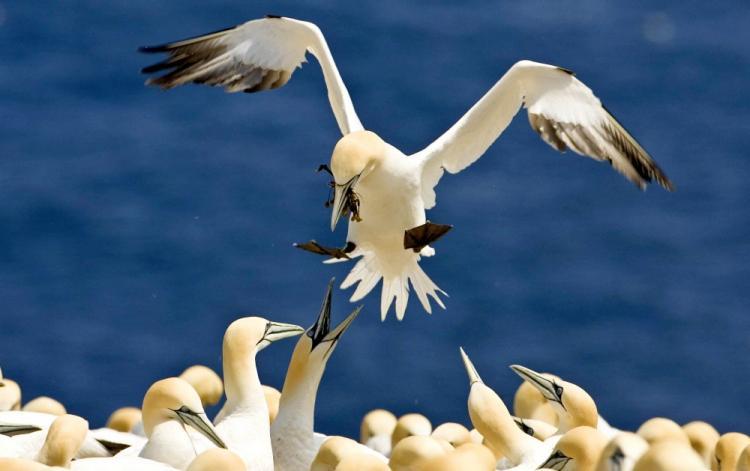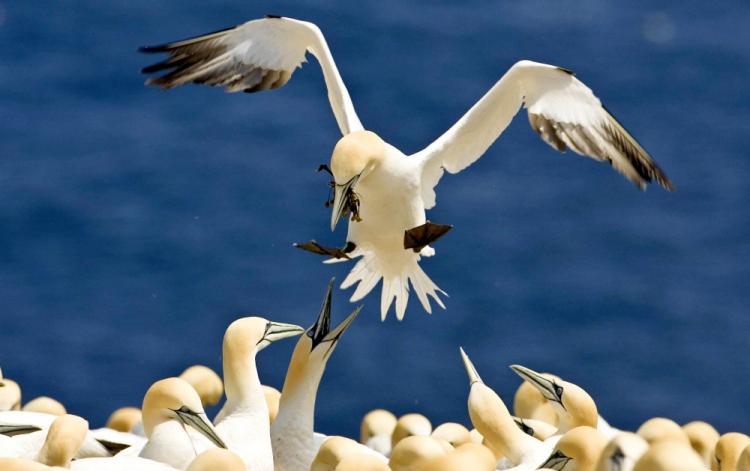Migrating south could be a perilous undertaking for dozens of species of Canadian birds that over-winter in the Gulf of Mexico or use it as a resting and feeding ground before continuing on to Central or South America.
Migratory Birds Heading for Gulf at Risk From Oil Spill
Migrating south could be a perilous undertaking for dozens of species of Canadian birds.

Northern gannets of Bonaventure Island in Quebec, home to an estimated 55,000 gannet pairs. The gannet is among the millions of migratory Canadian birds that could be flying into potential danger as a result of the BP oil spill. David Boily/AFP/Getty Images

Joan Delaney
Senior Editor, Canadian Edition
|Updated:





